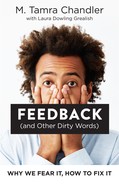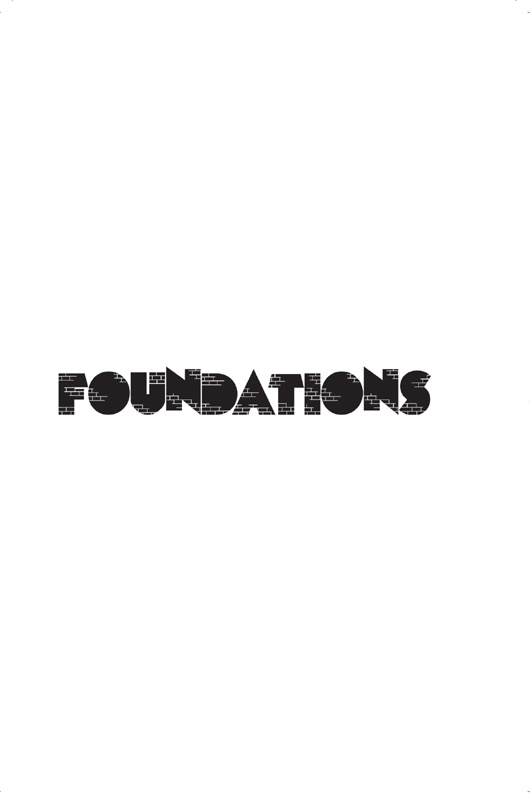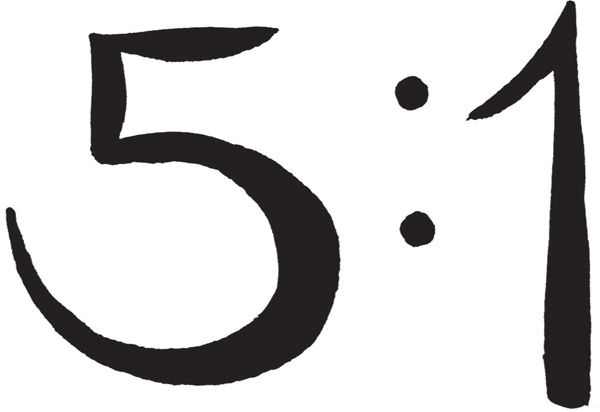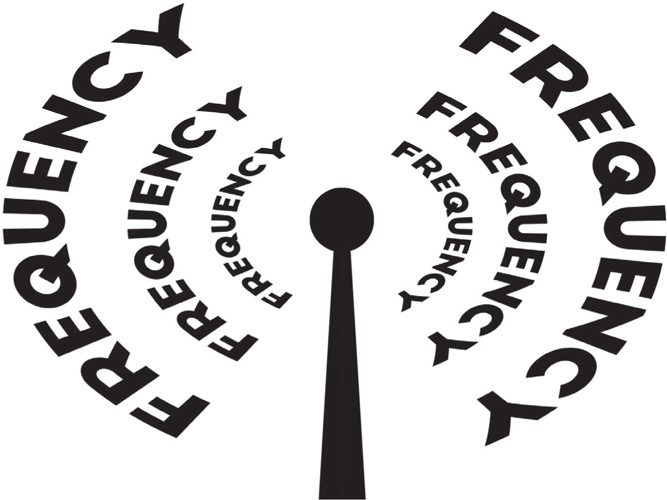CHAPTER 5
THE FOUNDATIONS OF FIXING FEEDBACK
THE POWER OF TRUST
Trust, trust, trust: It’s the vital ingredient that makes feedback work.
If you receive feedback from someone you don’t trust or don’t have at least a semblance of a connection with, it’s likely to go straight into the mental round file (even if it’s positive). If you share an insight with someone who doesn’t trust you, know you, or share your values, you might rev up the “fight, flight, or freeze” response in them. Trust greases the feedback gears, allowing information to flow without friction. Without trust, we simply don’t allow ourselves to experience the growth, improvement, and advancement impacts we seek.
Trust isn’t handed out like Halloween candy; it’s a valuable commodity that doesn’t come cheap. It’s built one interaction at a time, over time. It’s not driven by a single event but by a collection of moments that matter and experiences that knit us together. It’s hard to earn and it’s easy to lose. And when it comes to building genuine trust, the feeling has to be mutual.
To build trust, we need a track record of engaging in feedback conversations that help and don’t hurt. Feedback in trusting conversations creates a reinforcing loop, and the trajectory can be either positive or negative. Applying good feedback practices and avoiding those that we know will set off the alarm bells in the fear center are vital to growing trust. Trust allows us to collectively move forward in productive, growth-oriented ways.
We can’t force anyone to trust us, but there are sound actions each of us can take that make it easier for others to learn to trust us. Here are a few of the basics.
BE HUMAN. When we get wrapped up in our titles, positions, and expectations, it’s easy to forget to simply be human. And what does it mean to be human?
• Made a mistake? Admit it!
• Be authentic to who you are. Let your values show.
• Get personal. It’s okay to share your thoughts and feelings. Having the courage to specifically name or identify our emotions helps us connect more easily with one another, inside and outside of work.
• Don’t take yourself too seriously. Seriously!
DO WHAT YOU SAY YOU’LL DO. No one will trust you if you don’t stick to the commitments you’ve made and deal with people and situations with honesty.
• If you make a promise, keep it. If you’ve overcommitted, acknowledge it.
• Don’t offer things you can’t deliver.
• Be consistent: reliability is key.
• Don’t lie, conceal, exaggerate, or blow smoke.
BE KIND. Trust can only thrive in an environment of safety. If you’re unpredictable, trust will be shattered by fear. Trust comes when we:
• Speak with kindness, eliminating criticism, defensiveness, and blame from our conversations.
• Are there when we’re needed.
• Value the needs of others as much as our own.
CONNECT. Trust requires good connections, and good connections require an investment in time and effort. This means we:
• Spend focused time with others and are present when doing so.
• Always seek the win-win.
• Allow for collaboration and let go of control.
• Truly consider another’s viewpoint and ideas without judgment.
CONNECT FIRST
Connections drive trust, and trust drives feedback, so fixing feedback must start with building human connections. Through these moments of connection, we build relationships. From there, trust is built, and where there’s trust, there’s a healthy environment for great feedback. There’s no shortcut. It takes time, but it’s time well spent.
Trust helps quell the primitive brain’s “fight, flight, or freeze” urge by sending messages like:
• This is a friend, not a foe, so I don’t need to fight.
• This person has my best interests in mind and is not likely trying to harm me, so I don’t need to flee.
• I can stick my neck out, take a risk, and share my thoughts, feelings, and faults. I don’t need to freeze or appease.
Homo sapiens is a profoundly social species. Our most joyful moments come from closeness with others, while our saddest often stem from social isolation, losing a connection, or a lack of belonging. (Remember, the threat of not belonging is the key driver behind our fear of feedback.) As we spend time at work connecting with people we grow to feel at ease with, we develop a strong individual and collective sense of well-being, trust, and safety. And when those factors are present, we’re far more likely to take risks, be innovative, and go the extra mile when necessary. And guess what else happens when we connect with and trust one another? We’re also far more likely to seek, extend, and receive feedback.
We’ve set the starting point for building our feedback movement: connecting with those who work with us every day. That’s not just our boss and the people who report to us but also our peers, our internal customers, our external customers, and the others we collaborate with to get work done. All of these people have feedback for you that can help you grow, improve, and advance. And I’ll bet you have a few helpful ideas for them, too.
THE GOTTMAN 5:1
Five to one. Remember that ratio! It’s insightful. It’s telling. It’s a core foundational concept for developing and sustaining trusted connections and relationships.
Our team at PeopleFirm is tuned in to the work of Dr. John Gottman, a renowned therapist in the field of marriage stability and divorce prediction. With more than 40 years of research and as many books to his name, Dr. Gottman exerts a powerful influence on our work in leadership, team dynamics, and, yes, feedback.
In tandem with his research partner, Robert Levenson, Dr. Gottman conducted longitudinal studies of couples they tracked for nine years.1 Their findings are striking. Here’s the crux of what they learned:
• Couples who flourished engaged differently than those who did not.
• “The difference between happy and unhappy couples is the balance between positive and negative interactions during conflict.”2
• Stable and happy marriages had five (or more) positive interactions for every negative interaction (the 5:1 ratio).
• In the end, they were able to predict divorce in more than 90 percent of the couples who were unable to achieve this ratio.
If engagement and positive interaction exert such a profound influence on marriage stability, then perhaps their learnings are translatable to workplace relationships as well.
Five to one: what does that look like in practice? Well, it doesn’t mean dreaming up five positive yet insincere things to say about someone in order to sugarcoat a particularly bitter feedback pill. What it does mean is increasing the ratio (yes, up to five to one) of positive connections with one another. These interactions don’t need to be related to feedback. A connection may be participating in a social event, asking how someone’s doing and really listening, sharing recognition or gratitude, or working together on a tough challenge. It can be as simple as lending an ear to a colleague who’s having a rough day, or positively challenging another’s point of view. In essence, it can be anything that fortifies trust. This may not sound that difficult, but most of us struggle to find time and energy for these moments of connection in the midst of our frantic, overscheduled daily routines. We have to actively seek t hose moments of genuine interest, empathy, and relatability where we are putting someone else’s needs first. For our movement to be a success, this hard (yet not hard) work must happen throughout the day, every day.
Trust, connections, and relationships that have staying power and that feel safe are our foundations for our new brand of feedback. The Gottman 5:1 ratio provides a powerful yet simple reminder of how we can achieve those goals.
THE THREE FOUNDATIONAL Fs OF FEEDBACK: FAIRNESS, FOCUS, AND FREQUENCY
Every successful movement needs a call to action, a motto that inspires its followers and keeps them true to their mission. The French Revolution had “Liberté, Egalité, Fraternité.” We’re launching our movement under the banner of “Fairness, Focus, and Frequency,” and we’ll fly the flag of the three Fs high and proud.
In the sections that follow, we’ll demonstrate that every great feedback experience is anchored in fairness, focus, and frequency. When combined, these three Fs create a safe environment for Seekers, Extenders, and Receivers of feedback to request, share, digest, and explore ideas and recommendations that can help each of them grow. There’s plenty of data to back this up, including a 2002 Corporate Leadership study of more than 19,000 employees that found the strongest lever of increased performance was the fairness and accuracy of a manager’s descriptive feedback. Frequently observing direct reports and reporting on specific examples of what they saw without evaluating it increased performance by as much as 39 percent.3 As we move forward, these three elements will be essential to every impactful feedback scenario we’ll explore, so let’s make sure we understand each of our foundational Fs.
Fairness
The first fabulous F we’ll explore is fairness. “It’s just not fair!” is the universal lament of angry children learning to cope with the sense that they’re being treated unjustly. The thing is, that lament still rings in our heads when we step into our work lives. We might use more grown-up words and our “inside voices” to register our complaint, but the resentment and frustration triggered by a perceived lack of fairness still run deep.
Fairness is locked arm in arm with trust, so it’s hard to overstate its role in setting the scene for successful feedback. When present, fairness binds relationships; when absent or insufficient, it can break or damage them. If our relationships are tainted by a perceived lack of fairness, then feedback simply won’t work. When trust and fairness are absent, because either the feedback itself or its Extender seems unfair or biased, the Receiver retreats into protection mode. Our primitive mind tells us to flee the scene in order to protect what we hold dear, rejecting what could be good, valuable information. On the other hand, when we engage in a feedback conversation that is perceived as fair and trustworthy, the “threat state” red alert fails to activate. You are in the right frame of mind to actually settle in and listen, engaging in the conversation with your wise brain in control. Fair feedback reinforced again and again becomes almost as natural to you as breathing. We deepen our connection with others we are in feedback conversations with, and we come away from the interaction with information that has the potential to help us grow, develop, and reach for our potential.
One of the challenges in operating with fairness is the unavoidable effect cognitive bias has on every one of us.4 Regardless of whether you’re offering or accepting feedback, your engagement in the exchange is unavoidably influenced by your own biases. Simply put, biases are the shortcuts we use when making judgments and predictions. In a world where we are faced with thousands of choices every day, bias is a survival instinct that helps the human brain make rapid choices.
When we hear the word “bias,” our thoughts automatically turn to racial prejudice or political bias. While racial, religious, sexual, and other similar prejudices are bias at its worst, it’s vital we recognize that a smorgasbord of cognitive biases influences our views and drives faulty thinking for all of us. We’ve already discussed negativity bias and how it often influences how we receive feedback. Confirmation bias, another dangerous influence on feedback, leads us to look for evidence that supports or confirms our current point of view and helps us discount or ignore evidence that contradicts our opinion. Other more commonly known biases include recency bias, the halo effect, positivity bias, and so many more. One of my new favorites is bias blind spot, the tendency to see oneself as less biased than other people. In fact, as you scan the unofficial list of almost 200 cognitive biases on Wikipedia, it’s not hard to see how a number of these biases can negatively influence feedback fairness.
Think you can escape the effects of bias? Think again. Even the most well-intended among us are incapable of fully rising above their biases. So, if we’re all guilty of dozens of forms of bias, how in the world do we achieve fairness? Good question. We’ll continue to ponder how to tackle this challenge a little later, but for now let’s leave it at this:
• The first step is accepting that we are biased and continuing to work to enhance our awareness and understanding of how our biases influence our thinking.
• If we extend (and receive) feedback without judgment, we’re operating in far safer waters.
• We can minimize the effects of bias when feedback is an exploratory conversation—an open and honest exchange of what we believe we’ve witnessed or experienced.
• Finally, the more we look outside of ourselves and invite others into the conversation, the better off we’ll all be. In other words, seeking multiple sources can be one of our best weapons against the brain’s natural bias wiring.
Focus
The second vital F in feedback is focus. Focus is about making feedback specific, targeted, and brief. It’s a big idea delivered in small bites. Too much is too much, so get to the damn point or your feedback partner’s brain will shut down and shut you out.
I like to think of focused feedback as snacking on positivity and possibilities, not gorging on performance reviews and barely digestible diatribe. As my favorite font of wisdom, author Seth Godin, says, “Snacking is learning.” Well, feedback is learning, too, and it’s best when it comes in a concentrated form—a concise, specific, and actionable morsel of information. And remember that focus applies to both planned and spontaneous feedback. Dishing out bite-sized portions of off-the-cuff gratitude, recognition, direction, or coaching can move the performance needle much more effectively than hours of training sessions, development seminars, or dismal laundry lists of your rights and wrongs from the past year.
Frequency
If fairness and focus provide the fuel for our feedback engine, then our third F, frequency, is the accelerator. Connecting frequently speaks volumes. It says, “I’m paying attention, what you do is important and notable, and you are a priority.” That alone creates plenty of goodwill, without even factoring in the additional positive impact of knowledge sharing and connection building that can result from these moments. In the Corporate Leadership study mentioned earlier, performance increased by 30 percent when managers were knowledgeable about their direct reports’ performance. In the realm of performance increases, those are some big numbers!
The secret sauce of frequency is its informal and spontaneous nature. A quick observation, delivered without pomp and circumstance, will have more impact than infrequent, formal conversations. Organizations all over the globe are seeing bottom-line performance improvement as they ditch the dreaded and ineffective annual performance review in favor of purposeful collaboration through frequent and consistent feedback.
Just how frequent is “frequent”? Research suggests a minimal pacing of every two weeks for informal feedback is best. If it’s part of your daily routine, then the effect will be even greater. Is it worth the time? Absolutely. Frequency increases the quality of our relationships and accelerates our learning, and it’s an easy and effective way to deepen neural pathways to improve feedback of all kinds.
THE FINE ART OF NOTICING
Laura and I hope that if there’s only one practice you take away from this content, it’s that you’ll unclutter your mind of all the training sessions, lectures, articles, and struggles to expose your bias about feedback and put your energy into one thing: noticing. The shift away from formal performance appraisals or evaluations to a more present and accessible practice of noticing is so important to our movement that we’ve declared it an art form: the Fine Art of Noticing (FAN).
FAN, carried out under the banner of “Fairness, Focus, and Frequency,” is potent stuff. Noticing is observing without judgment. When we notice ourselves, other people, or behaviors without judgment, we observe things as they are, without attaching emotion. Dictionary.com provides this simple definition of the word observe: “to regard with attention, especially so as to see or learn something.” Like other ideas that have the power to change the world, it’s surprisingly uncomplicated, but when artfully executed, it can transform feedback. We recognize that FAN, like any other craft, takes practice. We test, we learn, we get better, and we build new neural pathways that make noticing, not judging, second nature, like breathing.
We propose 10 commitments to help us grow our skills in “noticing”:
Just as important as understanding what it means to embrace the Fine Art of Noticing is to recognize the legacy of feedback and the practices we’re letting go of. When we engage in FAN we’re no longer banking feedback for long, awkward sit-downs where we dredge up the muck accumulated during the last six months. We’re letting go of lists: the good and the bad, the strengths and the weaknesses, the ups and the downs. We’re pulling the plug on ratings, rankings, and comparisons. We’re axing the anonymous 360 surveys. We’re consciously stepping away from triangulation and hallway gossip. (Triangulation is a manipulation tactic where one person will not communicate directly with another person, instead using a third person to relay communication to the second, thus forming a triangle.) We’re rejecting the power imbalance that too often exists among Seekers, Extenders, and Receivers of feedback. We’re saying goodbye to traditions, old-school thinking, and practices that may have had all the best intentions, but which have failed to create the environment of safety and trust in which people can flourish.
That’s a lot of baggage to leave behind. You may find that it makes you a little uncomfortable to let those ideas and practices go, given the fact that most of us grew up in a world that honored and demanded some, if not all, of them. But as leaders of the feedback movement, we need to have the courage to be the first to walk away from the familiar and embrace new and better habits and practices.
CONNECT: A SIMPLE CONVERSATION GUIDE
CONNECT EXAMPLE 1: APRIL EXTENDS POSITIVE FEEDBACK TO MANUEL
CONTEXT |
|
“Manuel, I’d like to share some great stuff I’ve heard from the client about your work this week. Is this a good time to chat?” |
|
ONE THING |
|
“This is about the illustrations you’ve been working on for the new training materials.” |
|
NOTICE |
|
“The last six full-page illustrations you created were rated as ‘customer delighters’ in the recent customer satisfaction survey. They particularly liked your ‘font as illustration.’” |
|
NO G.R.I.T. |
|
“You found a unique way to meet all the customer specs and add a bit of your personal flair.” |
|
“Your approach led to a top rating, which is great to have as a testimonial on the company website. Excellent performance like this gets us more work—the kind of work I know you are passionate about. It makes me proud to see you get this kind of recognition. I hope you’re pleased as well.” |
|
CONVERSATION |
|
April: “Well done! How do you feel about this?” Manuel: “Thank you, April! I feel great being part of the team that got this done. Let me know if you have any other specifics. I’m interested to see if the other drawings hit the mark, or if I should tweak them. I’d love to work on more projects like this. Let me know how I can raise my hand for another client assignment when it comes up.” |
|
TRUST |
|
Trust and connection grow when Manuel makes it clear to April that the feedback has inspired him to tune in to more opportunities to do work he loves and excels at. |
|
CONNECT EXAMPLE 2: MAX EXTENDS IMPROVEMENT FEEDBACK TO CHARLENE
CONTEXT |
|
“Charlene, I’d like some time with you to talk about the ship-and-load schedule for Thursday. I understand we’re behind, and some deadlines may have been missed. Would you be willing to meet at four tomorrow afternoon so I can learn more?” |
|
ONE THING |
|
“I understand we’re behind and some deadlines may have been missed.” ^ The missed deadline is the one thing. |
|
NOTICE |
|
“The tracking report detail shows that the ship-and-load schedule was off by four hours on Thursday, and that stall came from our group. Can you please confirm my understanding?” |
|
“If I don’t know we’ve missed the deadline, I can’t get ahead of it. As a result, we collectively take the hit to our on-time metric and we pay late penalties. It’s frustrating for me, and I assume for you too, knowing your goal of being the top on-time unit in the plant. Let’s talk about how we can get there together.” |
|
CONVERSATION |
|
Max: “Can you tell me what happened and how we can make sure we don’t have a miss like this again?” |
|
TRUST |
|
Together they make a plan for an early warning signal if a deadline is in jeopardy in the future. Charlene feels comfortable in the conversation, yet remains accountable for the mistake. Max chose to address the hard issue but not shame Charlene, so she is more likely to ask for what she needs next time. Trust and connection have been furthered. |
|










